STUDENTS PROJECTS
2010
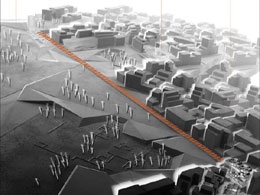
10 April, 2011
“Urban intervention network in Plato’s Academy_A Museum of the city of Athens proposal”
"Urban intervention network in Plato's Academy_Recasting the established plan for the museum of Athens by shaping the boundary between contemporary urban fabric and archeological park".
Student: Stathopoulou Aphrodite
Supervisor: Tsiraki Sofia
Assistant Supervisor: Mavridou Maria
National Technical University of Athens, School of Architecture
Date of presentation: November, 03, 2010
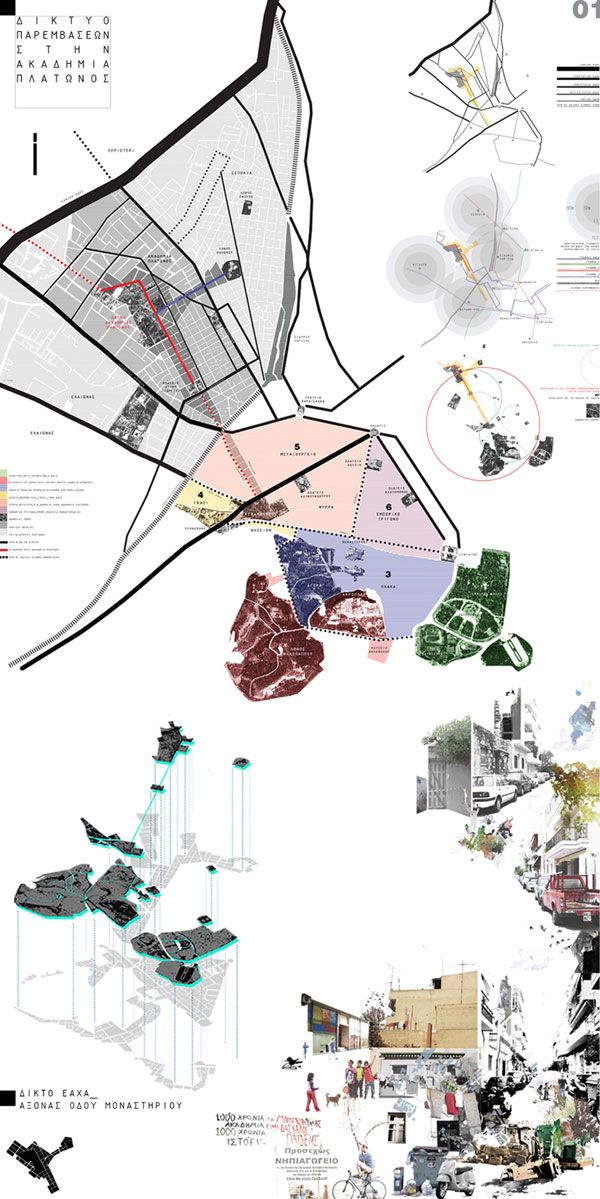
Network of intervention_the master-plan
This study is developed right above the trail of the ancient road "Dimosio Sima" concentrating on the proposal of a network of urban interventions, ranging in scale, in the area surrounding Plato's Academy archaeological park. The subjects examined consist of collective housing, education and research and culture.
The project focuses on the boundaries of the neighborhood to the archaeological park aiming to alleviate the short-term impact of the development process. Monastiriou street becomes a pedestrian road constituting the main axis of the intervention acting as the main link between the residential area and the centre of Athens and by extension the broader archaeological network (EAXA). In an effort to reconstitute the relation with the neighboring residential area, Sepolia, Tripoleos street also becomes a pedestrian road connecting Ippeios Kolwnos Hill with the Park of Plato's Academy. The traffic arrangement is completed with the removal of Cratylou and Drakontos streets thus making the currently divided park into a single open space.
Redesigning the park
The park itself becomes a reference point for the project; today it takes up two roles: its large scale impact as an archaeological monument and the local scale of the neighborhood park. In an effort to interpret its dual character the austere existing contour of the park is removed and the archaeological excavations intertwine with the open green spaces through folding landscape. Following this folding line, the existing excavations are redesigned as green geometrical slopes.
In addition to the analysis and proposed level of urban design within a broader working group, this study examines the development of the urban front of the archaeological park, continuing the existing network of educational uses. A research centre concerning the city of Athens is proposed to be located right at the intersection of the pedestrian roads of Monastiriou and Tripoleos, where a part of the park penetrates the urban fabric.
Museum of the city of Athens
The network operations at the Plato's Academy, wich were constributed during the teamwork part of the current study is completed with the establishment of Athens' city Museum regionally towards the park in front of the pedestrian axis of "Monastiriou" street, and as the conclusion of a walk between two major future poles (Kerameikos, Plato's Academy). Both the existent plan concerning the museum's placement within the park and the planned building program are reexamined and recasted toward an optimal integration of such a distant use building in today's local neighborhood.
Scenario
The position, the nature and even the extent of the institutionalized museum, wich consists of the placement an extensive ground floor building within the park are redefined. The aim is to create a building that will be seen as landmark for the city while incorporating both the scale of the local neighbourhood and the openness of the park -and thus- a museum that remains closely associated to both the contemporary and the symbolically charged historical lanscape. The proposal consists of a type of building that serves as a threshold between park and city, growing as a boundary defined line; a structure that finally appears "non-built" but serves mostly as a path, parallel to the axis of the proposed promenade.
Concept
Exploiting the hidden urban reserve, the building is developed as a cast-cave-in depth of two floors below ground. There are two main access that lead, through a system of ramps, to the single foyer, located on the first level. This foldable system of ramps, distributes moves bilaterally across the bottom level of the main exhibition and then gradually ascends, in a circular path that leads to the same initial space of the single first level foyer. Thus, resulting in simple closed loop movements which are necessary for such a building's proper function. Natural lighting is also achieved through this system, featured by a folding land frontier between park and building; similar to these folding geometrical landscape slopes that are used to form the boundary of the park throughout the whole master-plan. The museum becomes a point of observation, both from and toward the city, as it is traversed by points or peaks that serve as landmarks above ground, reminiscent of contemporary urban geometry. In order to off-load the extensive built space that would have otherwise occupied the the park, the museum as a building complex cooperates and shares features with the adjacent building of education, research and documentation for the city of Athens, as a result of teamwork study, consistent to the initial approach of dispersed uses throughout the proposed promenade.
Realization
The building carries a mixed structure of both reinforced concrete plates and extensive regional walls, and slender metal pillars -arranged in grid construction- ordered by (9x9) meters apart. The aboveground parts of the building are metal frames covered by u-glass for simultaneous insulation and transparency. Additionally green roofs, which consist of the natural flora of the park, are added toward the improvement of both the buildings' isolation and environmental conditions, while the linear, symbolic, structure of the building remains discreetly visible.
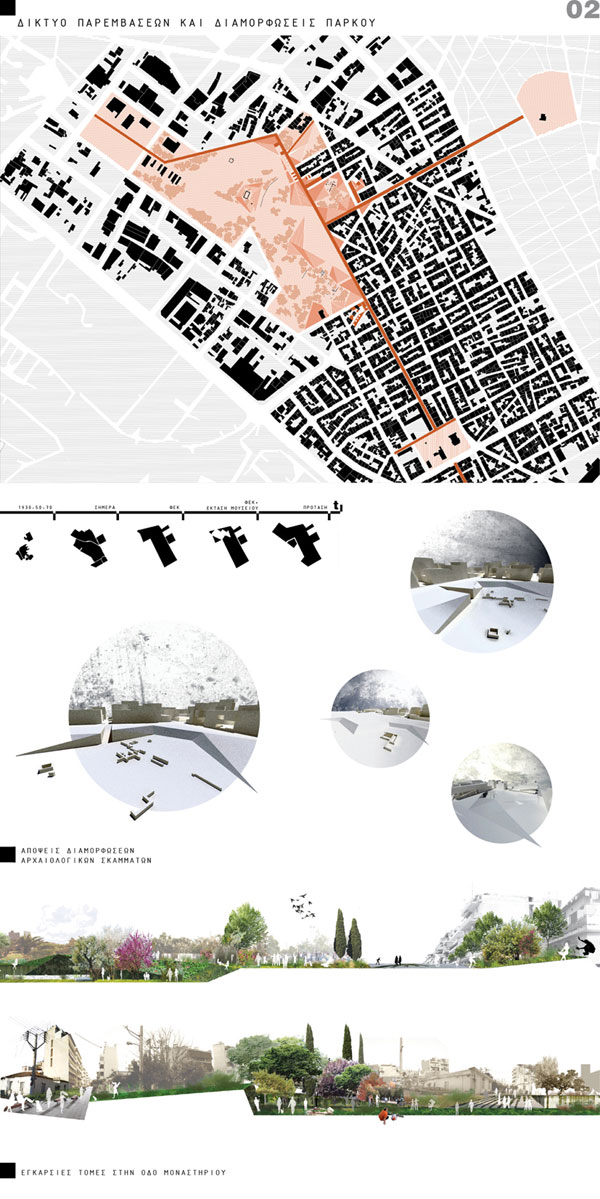
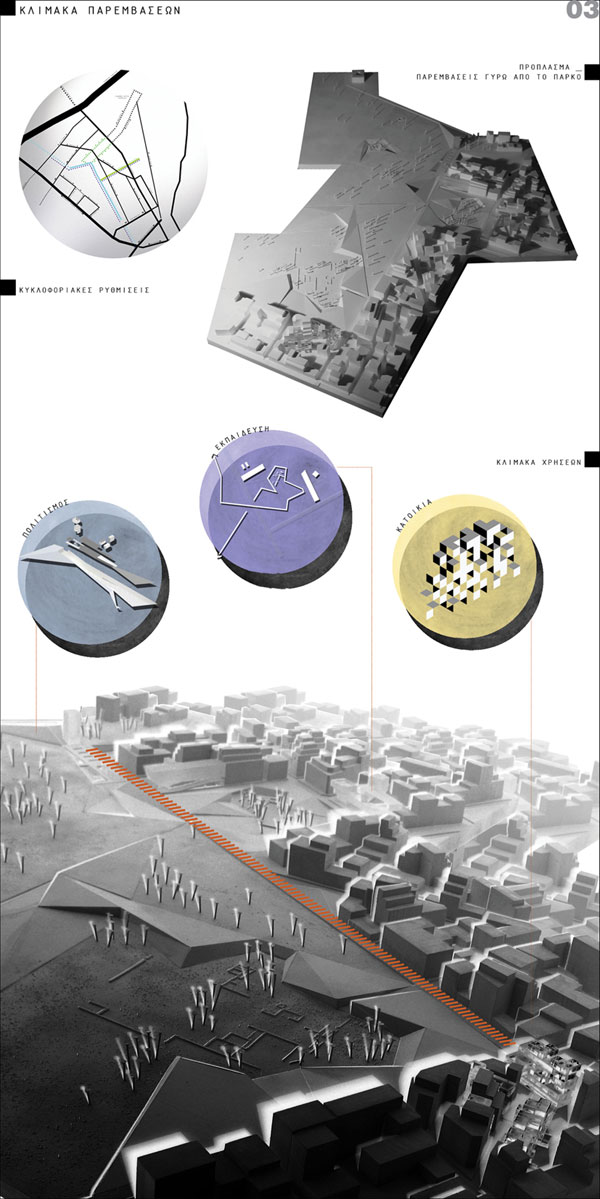
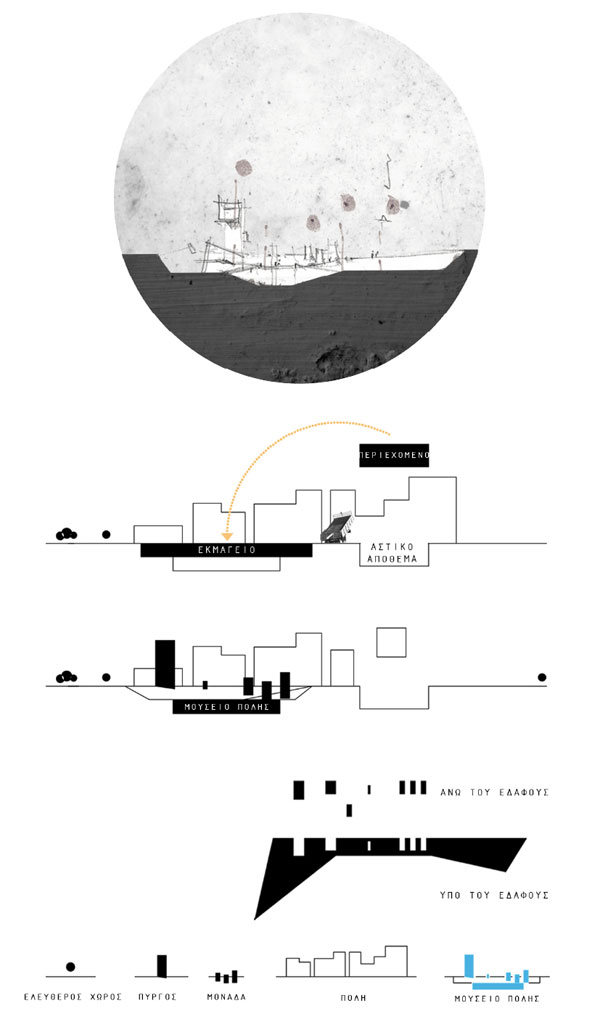
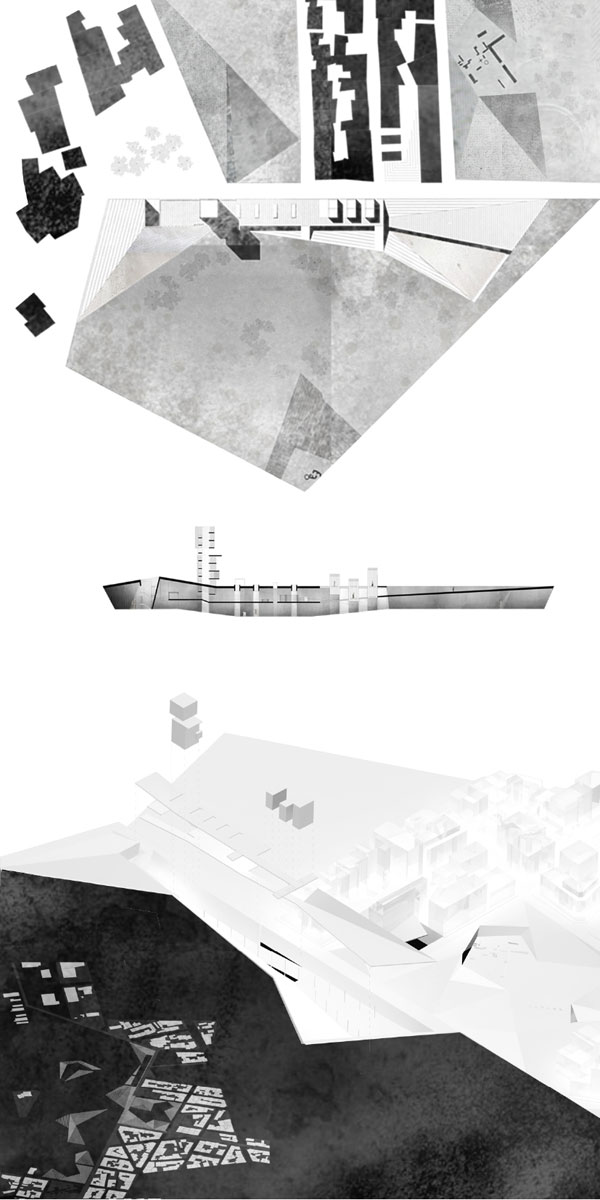
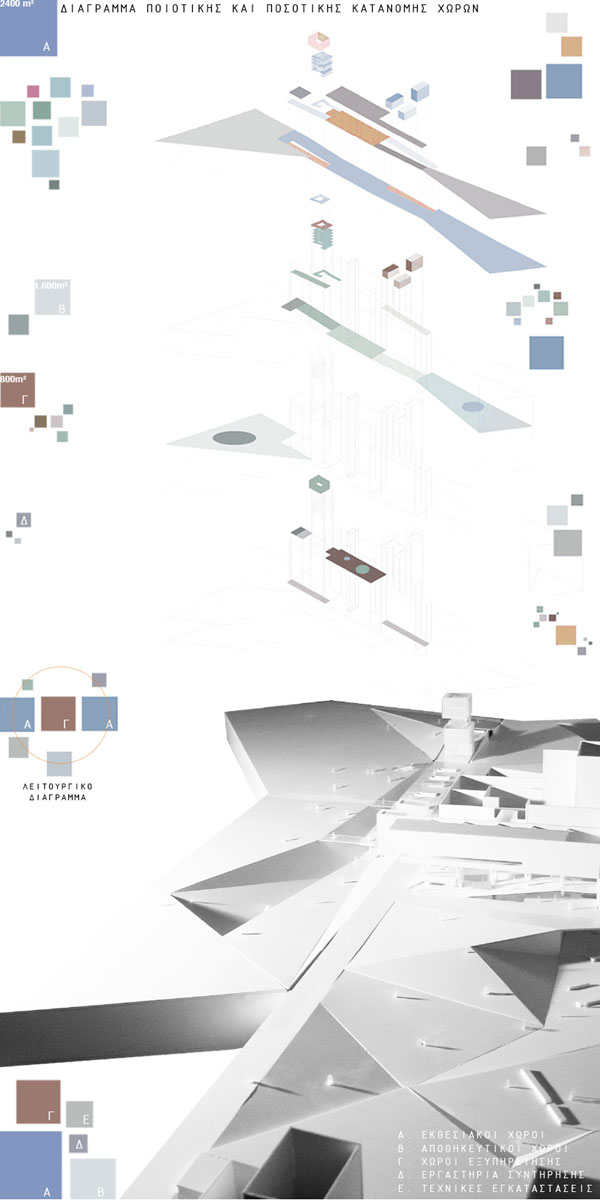
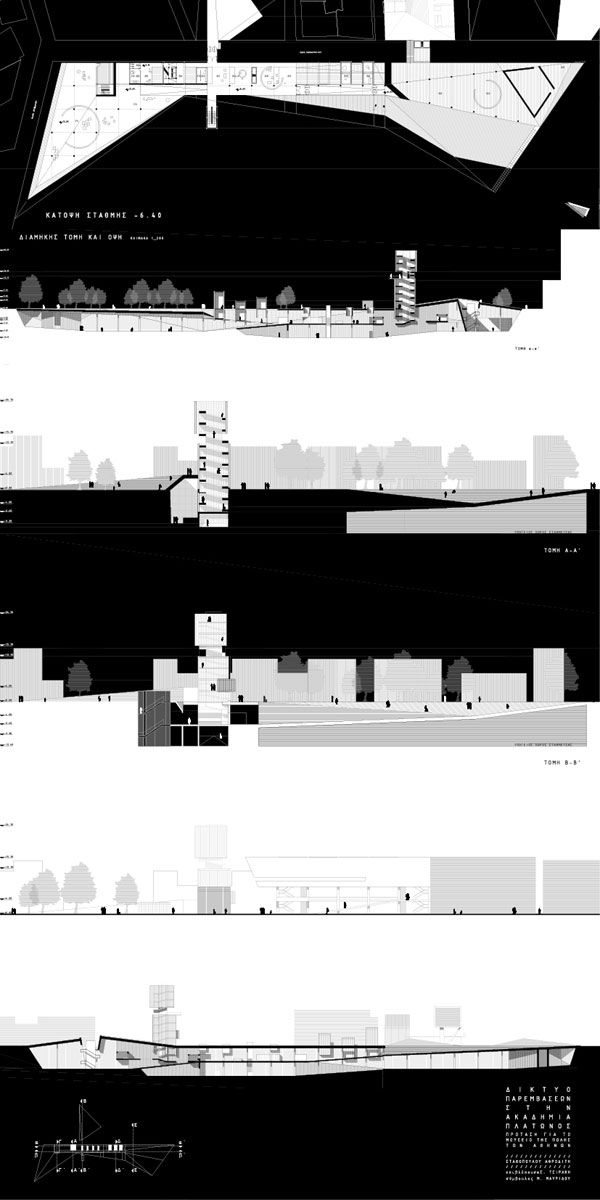
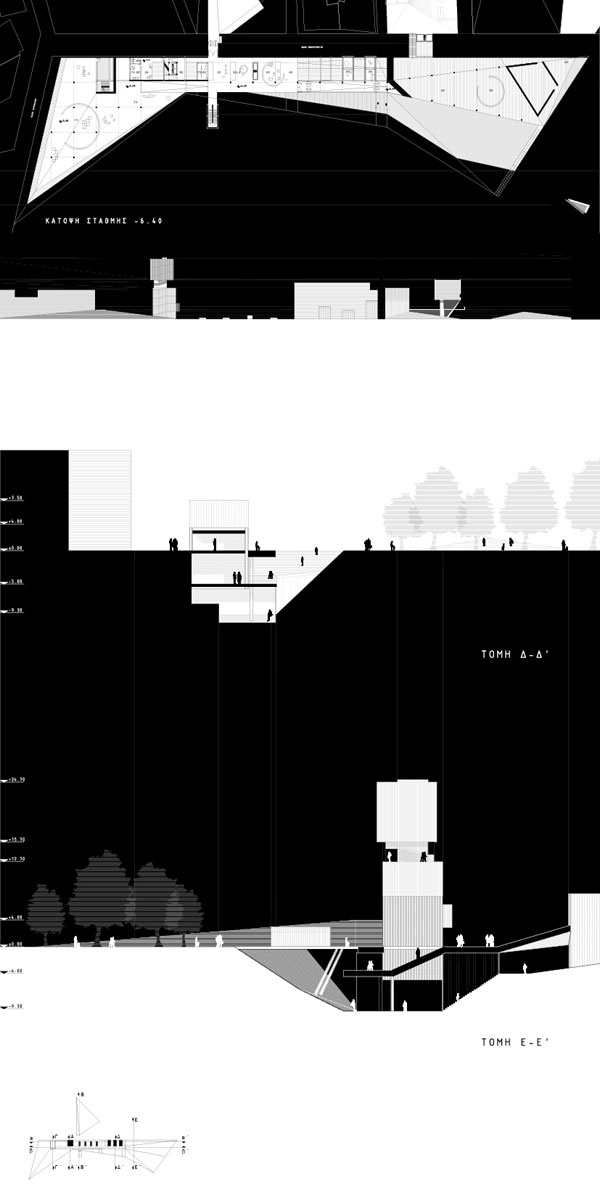
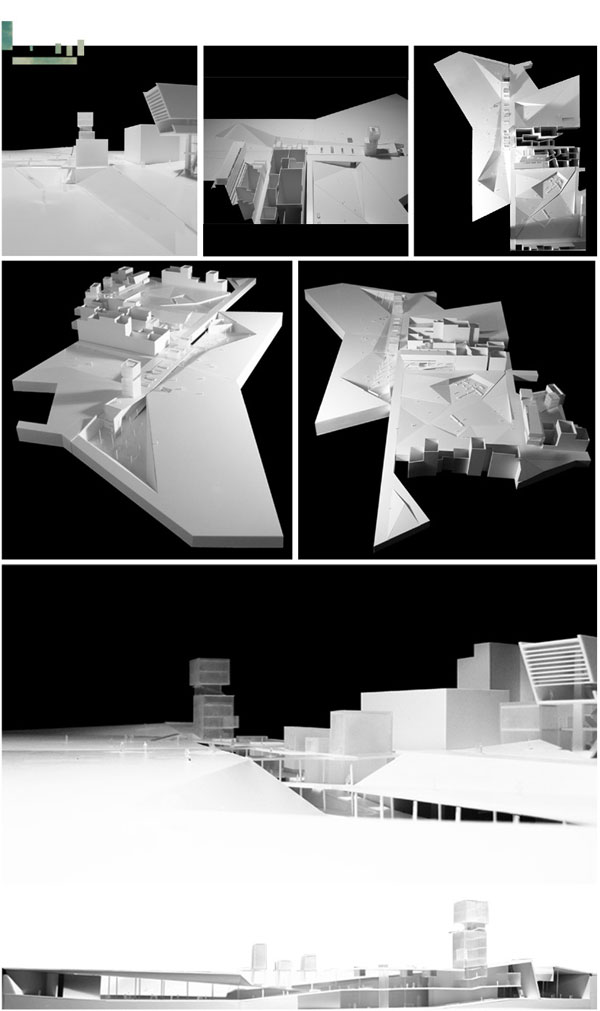
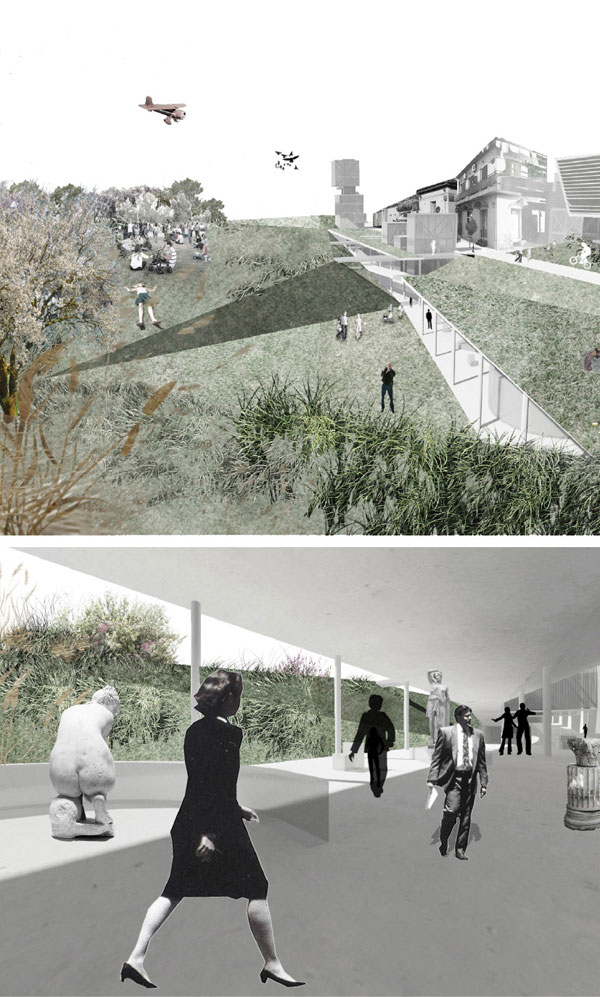
Related articles:
- UNDERGROUND MUSEUM IN PALIOURI DIMINIOU OF PHYSICAL DISCIPLINE AND BODY INCARCERATION ( 26 August, 2007 )
- Moderna Museet Malmö ( 10 May, 2010 )
- NEW PATRAS MUSEUM ( 12 October, 2009 )
- NATIONAL RESISTANCE MUSEUM AND MONUMENT TO ELECTRA APOSTOLOU IN NEON HERAKLEION, ATHENS ( 19 October, 2009 )
- Small mining museum and centre of environmental research in Itea. ( 17 July, 2010 )
- 3rd Prize for a Greek entry in an international architectural competition ( 20 September, 2010 )
- ATHENS COMICS MUSEUM at Gkazi ( 10 February, 2011 )
- Costume Culture Museum ( 10 February, 2011 )
- Stone Bridge Museum ( 18 September, 2012 )
- Transformation of the warehouse of tobacco Papapetrou in an Archeological museum of Aitoloakarnanias and cultural centre of Agrinio ( 08 May, 2011 )
- Los Angeles Museum of the Holocaust ( 15 June, 2011 )
- Archaeological Museum of Arta ( 12 August, 2013 )
- "Earth Museum" ( 05 January, 2012 )
- Venetian Arsnals of Chania ( 24 January, 2012 )
- New Taipei City Museum of Art, Conceptual Design International Competition August 2011 ( 08 February, 2012 )
- Mining Museum in Serifos ( 15 February, 2012 )
- Riverside Clubhouse ( 10 March, 2012 )
- New Glasgow Riverside Museum of Transport ( 24 April, 2012 )
- Enzo Ferrari Museum ( 23 April, 2012 )
- Bunker 599 603 ( 06 May, 2012 )
- Heidelberg Castle’s new Visitor Center ( 24 May, 2012 )
- Grand Egyptian Museum in Cairo ( 22 January, 2013 )
- Guggenheim Museum in Helsinki ( 22 March, 2013 )
- Noesis. Interactive Museum ( 20 May, 2013 )
- Danish National Maritime Museum ( 28 November, 2013 )
- Redefining Leftovers ( 05 April, 2014 )
- Cultural center of Glyfada ( 23 February, 2014 )
- The rack railway museum at Vouraikos gorge ( 18 April, 2014 )
- Historical and Folklore Museum of Nikiti ( 17 February, 2017 )










